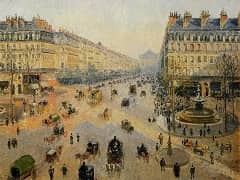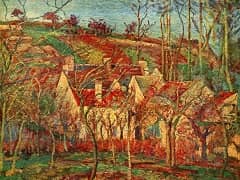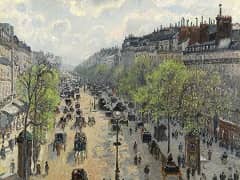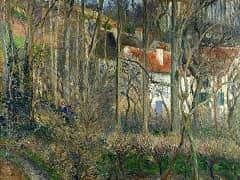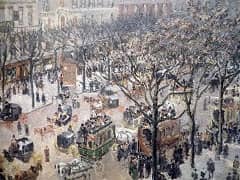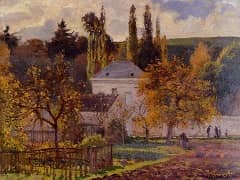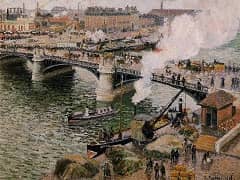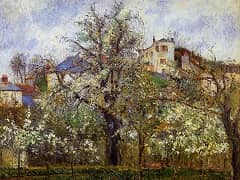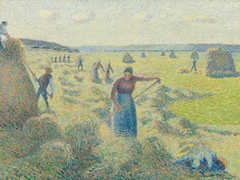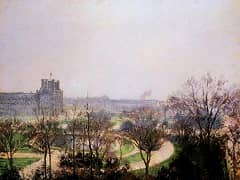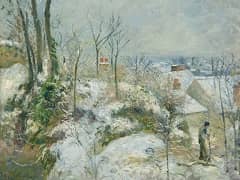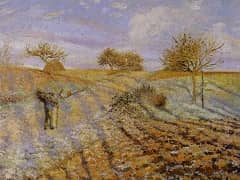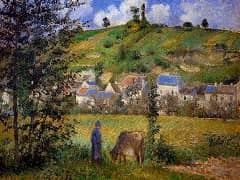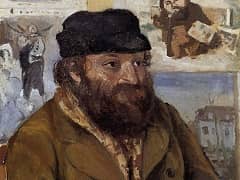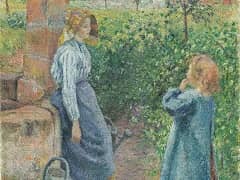Boulevard Montmartre at Night by Camille Pissarro
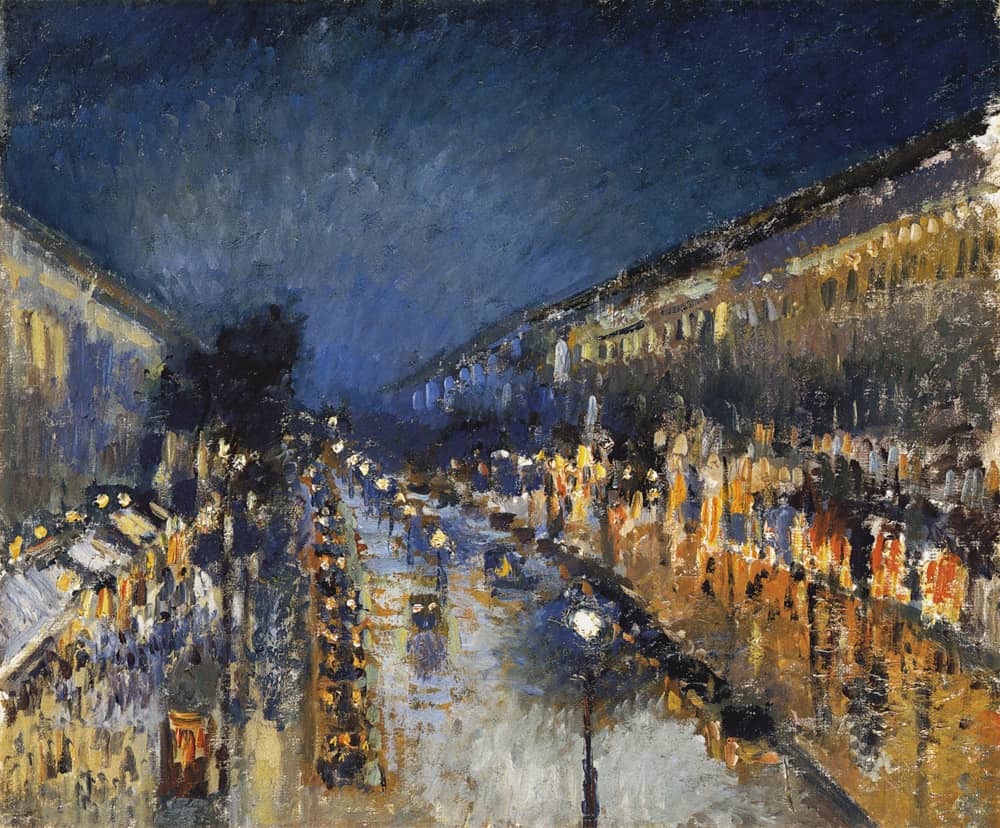
Although living and working in the countryside for most of his life, Pissarro kept a studio in Paris when he could afford it. However, with a few exceptions, he showed no interest in the city as a subject for painting until the last twenty years of his life. It seems that the visit to Rouen in 1883, captured his imagination and, when in 1888 he contracted an eye infection which obliged him to reconsider his working methods, he decided to turn his attention to a study of urban themes. He had always considered painting from nature (en plein air) of the greatest significance to his art, but his eye was sensitive to both light and cold, particularly wind. This meant that except on warm still days he had to work from the shelter of an interior, and finding such a room, with a view that could sustain his interest, led him back to the city. Monet also painted scenes of Waterloo Bridge from the Savoy Hotel in London in his old age.
Typically, Pissarro tackled his new-found subject with great enthusiasm, writing to Lucien in 1897: "I am delighted to be able to paint these Paris streets that people have come to call ugly, but which are so silvery, so luminous and vital." But he did not restrict himself to views in Paris; he also spied down from hotel windows on the lively streets and ports of Rouen, Dieppe and Le Havre, and painted many of the scenes depicted by the Impressionists in their early years. He even took up early Impressionist themes as well, studying the effect of weather and passing time in a series of paintings, as Monet was doing at much the same time. In early 1897 Pissarro established himself in the Grand Hotel de Russie, Paris, close to his old studio in rue des Trois-Freres. Here, working from an upstairs room, he painted thirteen views of the Boulevard Montmartre (and later made a lithograph), showing it in different weather conditions and at different times of day, but only once at night.
In Boulevard Montmartre at Night, Pissarro captures in bold brushstrokes of color the fashionable life of this busy street on a wet night, the road a pattern of luminous greys and blues; and the pavement reflecting the lights of the cafes and restaurants. For Pissarro, these late urban themes solved one of the overriding problems of his early landscapes - that of depicting recession. The architectural structure of a Paris street gave his paintings a natural spatial depth, leaving him free to concentrate on other aspects of the painting. Here he leads the eye into the dark void with lines of dancing lights - the street lamps, the lines of carriages, and the watery reflections on the pavements. He enforces the receding lines of the street and buildings with tonal extremes - dark shadows and bright lights - and eliminates the detail of the boulevard buildings, even reducing the picturesque skyline of the rooftops on the right to a harsh black line.
This lively night scene - the only one in his oeuvre - is more like an oil sketch than the others in the series, which are painted in the dense impasto typical of his later years; he seems to have worked quickly in an attempt to capture the lights and silvery reflections in the wet street before they disappeared. Boulevard Montmartre at Night is now considered as the most celebrated night scene painting created by impressionists, along with the famous Van Gogh Night Stars painting.


